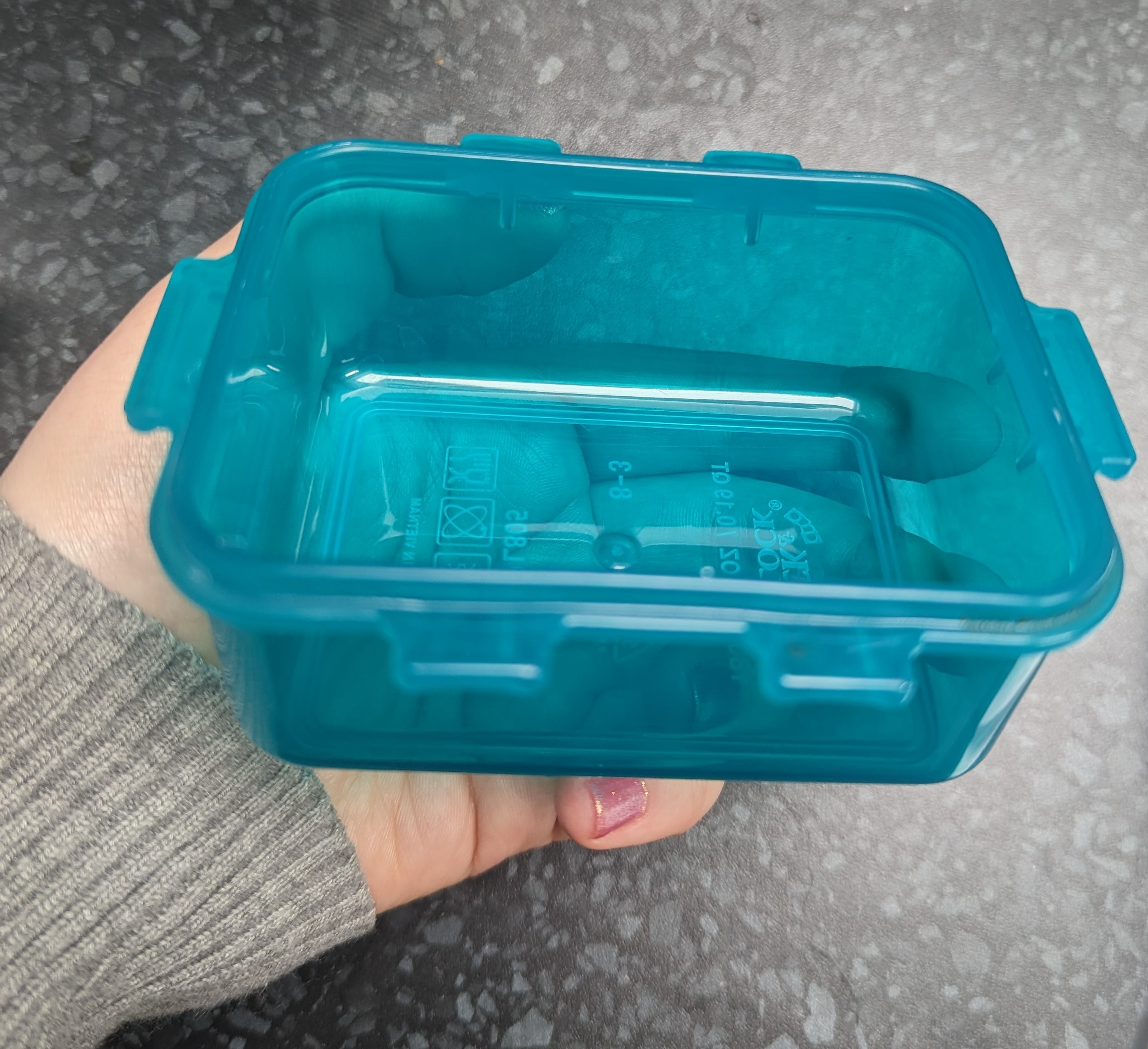It’s a conundrum many of us have wrestled with. We all want to do our bit to help the planet and fight food waste – yet we know that the minute the leftover spaghetti touches the inside of that plastic food container, it will be consigned to a life of orange-stained abandonment at the back of the cupboard until we can justify throwing it out and buying a new one.
For me, proud Brit that I am, it’s usually with leftover baked beans that I come a cropper. It has previously reached the point where I have reserved specific containers for the purpose, and woe betide anyone who goes near my pristine boxes with any food that’s had so much as a sniff of a tomato. A quick glance at Reddit proves I’m not alone.
But does it have to be this way? Why do tomato-based foods stain plastic so, and is there a reliable way of getting the stains out? Well, here at IFLScience, we like to try and answer The Big Questions, and these were certainly questions that loomed large in my mind as I decided which container would be the next to be sacrificed to the baked bean gods.
Why does tomato stain plastic containers?
With several years of plastic container-owning adulthood under my belt, I was not unashamed to learn that the answer to this question could be found in some good old high-school chemistry.
Tomatoes contain a bright red pigment called lycopene. Among its many redeeming qualities – it’s been linked to a number of health benefits, from sharper eyesight to better boners – lycopene is hydrophobic. The plastics that are typically used to make food storage containers are also hydrophobic and porous, which is the perfect combo to encourage lycopene to stick to them and never let go.
Another reason why this is such a headache in the kitchen is that cooking tomatoes to make sauces, soups, and all the other lovely things you might want to store in a container actually increases their lycopene content.
As Dr Emma Davies writes for BBC Science Focus, its hydrophobicity explains why removing the lycopene stains with soap and water is a non-starter – and the high temperatures inside dishwashers can actually be making the problem worse.
Incidentally, hydrophobicity also explains another annoyance associated with plastic containers: how difficult they are to dry. Writing for Cosmos, Ellen Phiddian explains that water on a plastic surface sits in larger droplets, making evaporation slower.
How do you clean stained plastic?
We’ve pinpointed lycopene as the pesky culprit, and we know that hot soapy water is unlikely to stand up to the challenge, but are there any cleaning hacks that do work?
To pre-empt some of the inevitable comments, there is, of course, a simple way of preventing this problem, which is not to use plastic in the first place. Microwave-safe glass containers, for example, are readily available and more resistant to staining. But if you do have a sad, orangey container on your hands, there may yet be a way to salvage it.
Good Housekeeping suggests that if you tackle the stain immediately, applying some vegetable oil before washing can help lift the stain. If that doesn’t cut it, they recommend scrubbing well with bicarbonate of soda paste before washing as normal.
With nearly all of the big issues plaguing humankind, a five-minute search on TikTok will yield a surfeit of people claiming to have The Answer™, and stained plastic containers are no exception. The good people over at The Spruce Eats checked out one TikTokker’s hack involving ordinary dish soap and paper towels, finding it to be surprisingly effective.
You simply pour warm water and a little dish soap into your stained container before adding a ripped-up paper towel, securing the lid, and shaking vigorously. Apparently, it should only take about a minute for the stain to disappear. Microbiologist Jason Tetro explained to The Spruce Eats that it’s the combination of agitation and oil absorption via the paper towels that makes this hack effective.
A more old-school option for stubborn stains, as recommended by the American Cleaning Institute, is soaking in a mild bleach solution.
All of these methods sound like they’re worth a try, and they’re certainly preferable to just giving up and throwing out your container – our planet really doesn’t need any more plastic pollution.
But reader, it’s confession time. I’m afraid we can’t directly confirm whether or not any of these hacks worked for us. After fulfilling its bean-storing duties, my sacrificial plastic container was washed in the sink with the rest of my dishes and, well, you can see the results:

It’s like it never happened.
Image credit: ©IFLScience
Not a stain to be seen. Is it because the container is colored? Have I accidentally bought stain-proof plastic containers? Would it have withstood another tomato-based foodstuff so successfully? Perhaps those are questions for another day.
All “explainer” articles are confirmed by fact checkers to be correct at time of publishing. Text, images, and links may be edited, removed, or added to at a later date to keep information current.
Source Link: I Stored Tomato-Based Food In A Plastic Container – Is It Doomed?